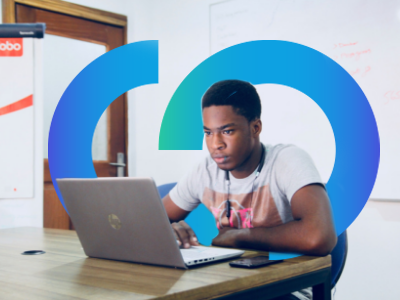Standard job descriptions no longer cut it. They are unrelatable, unenticing and inaccessible to diverse talent. Given the talent shortage that we face today, job adverts must be revamped and clear of exclusive wording, corporate jargon, and poorly communicated benefits. Instead, they must focus on providing and communicating highly specific, granular information to diverse candidates in an authentic way.
You also need to leverage your employee advocates – get them to share their personal stories and work experiences – and embrace digital recruiting practices that allow you to connect diverse candidates to employees, whether via online platforms that facilitate candid discussions or live chats.
Why are your current job descriptions failing to attract diverse talent?
Words have an impact. And this impact can be costly if your word choices are off-putting. In 2011, the Journal of Personality and Social Psychology1 analysed more than 4,000 job adverts in historically male fields, including engineering, plumbing, and programming, to determine whether stereotypically masculine terms such as ‘aggressive’, ‘competitive’, ‘leader’ and ‘dominant’, were dissuading women from applying.
Their analysis of women’s responses to these job ads revealed that “masculine wording in job advertisements led to less anticipated belonging and job interest among women”. Unsurprisingly, the study concluded that the status quo for job advert wording remains unchallenged as job ads perpetuate gender inequality in male-dominated sectors. Indeed, research from the Geena Davis Foundation found that women account for only 34% of all characters in ads2. Conversely, according to research commissioned by the German education ministry, when job ads use words like ‘dedicated’, ‘conscientious’, ‘sociable’, and ‘responsible’, women were more likely to believe they could carry out these roles.
Aside from off-putting language, your content could be unengaging – by this we mean typical boilerplate sections, lists of perks, potential routes for progression, and corporately curated statements that hope to earnestly portray your commitment to diversity and inclusion. This approach seldom works to attract diverse talent.
The content in job ads like these falls short – and despite some roles genuinely involving interesting and dynamic challenges, poor advertising makes the scope of work appear as a long list of difficult chores. A typical job description will consist of lists of responsibilities and requirements, laden with buzzwords such as teamwork, agility, collaboration, and communication as well as corporate jargon and highly specialised terminology, which do nothing more than satisfy your SEO.
So even if diverse candidates are finding your diversity job descriptions, they aren’t applying to them, as they are simply too generic and densely worded. In fact, it’s been proven that corporate jargon and technical terms dissuade younger, diverse talent3 from applying to roles.
While existing research has highlighted changes that need to be made to your job ads to improve your diversity recruiting efforts, they don’t go far enough to address the root of the problem.
Here are five ways to modify your diversity job descriptions so that they satisfy the diverse candidate.
Tip 1: Dare to Include Job Description Content Written in the Form of Stories
The act of storytelling is immersive. Leverage personal and memorable employee stories in your diversity job descriptions to prompt an empathetic response from candidates.
From our survey of 1000 candidates globally, we found that 54% of candidates believe that real-life stories and experiences from a company’s employees show that a company genuinely cares about diversity and inclusion.
Given the compelling nature of storytelling when it comes to diversity and inclusion, it pays off to incorporate aspects of storytelling in your job ads. For example, rather than bullet pointing the benefits, tell a short story of how these benefits are translated in practice, particularly how they have benefited workers in the past or how they can aid a future employee. This way, candidates can explore the ethos of your company and see your vision in action.
Real-life stories in job ads are also a great way to combat negative Glassdoor reviews. Allow your employees to advocate on your behalf – let them offer their view on the benefit of working for the company. Their personalised narratives offer a form of social proof that Millenials and Generation Z are actively seeking when they turn to review sites like Glassdoor. Encourage employees to speak personally – rather than focus on the technical drudgery that deters candidates in the first place.
Best Practices for Using Stories in Job Descriptions
One company that has employed this effectively is Hearst Magazines. Their job adverts offer a unique way to tell stories – candidates can hover over photographs of each employee to reveal their short insight into working for Hearst. Joining Hearst in their unique way of deploying employee stories are Parexel, who employ creative, timeline-focused media that is based on real employees.
Tip 2: Go Granular or Go Home
The type of content you chose to include in your diversity job description is key.
In our latest research report, Diversity Recruiting: What’s On Candidates’ Minds?, we analyse over 25,000 questions focused on diversity and inclusion on the Clinch Employee Connections platform, across the UK, US, and France. We discovered a crucial candidate demand for personalised responses. Each candidate had specific interests, concerns and questions when it came to the workplace, and wanted content that addressed these aspects.
These questions broadly fit into three categories, depending on which groups was asking them:
Eligibility i.e. Are bachelor degree candidates eligible for an off-cycle internship?
Fit i.e. What business area could I go into following a career in military intelligence?
Work environment i.e. Are there many senior openly out LGBT people at Citi?
But don’t just take our word for it – other research concurs with our findings.
For example, research suggests that you should consider changing tactics and listing only the essential ‘candidate needs’ – in contrast to the ‘employer wants’ which typically dominate diversity job descriptions. This approach has been shown to increase the quantity of applications three-fold4 and attract a better quality of candidate. Write a job ad that focuses on candidate needs. Not employers.
Best Practices for Using Granular Content
An example of best practice comes from Lever5; they are ditching the traditional job description in favour of what is referred to as an ‘impact description’ instead. These descriptions delve into the details of the position, and break down key milestones that an employee is expected to achieve during their first year at the company. These are considerably more effective at attracting diverse talent as they foster a sense of inclusivity – the emphasis is placed on the impact your ideal diverse candidate will have on the organisation.
Together with our research, these findings present the case for granular content.
So while diverse candidates will want to know the remits of the job – ideally conveyed in a manner that places the focus on their needs – they will also need to understand how their prospective employees will cater to them on an individual basis. As such, call out advanced diverse talent initiatives – including workplace flexibility, and family leave and return-to-work policies – that attract women, parents , and employees of all generations.
This practice is employed by T-Mobile; their headline and sub-headline are so compelling that diverse talent is won over before reaching the lengthier diversity statement below it. Moreover, their engaging feature image of real employees, inherently more persuasive than stock images deployed en masse, adds to the authenticity of their diversity statement.
Does your company have an active Diversity and Inclusion Group (DIG) in place? What about Employee Resource Groups (ERG) or important benefits like paid parental leave for all types of parents or recognition of other religious holidays? Ensure these inclusive practices occupy a dedicated space – the Equal Opportunity Statement is a must-have – or incorporate these things into the blurb about your company.
If your company offers these benefits, you may not realise the need to call them out in job descriptions – particularly as they are not necessarily beneficial to each employee – but mentioning them allows you to prove your commitment to diversity and inclusion. This is particularly important in conveying your larger company values6.
Above all, demonstrate a commitment to diversity and inclusion. It is very advisable to devote some space to describing the company’s commitment to looking for all kinds of talent to build a diverse workforce in which all social (and other) groups are represented.
Tip 3: Go Beyond Words with Video
As we’ve outlined, storytelling needs to go further than third-person testimonials – you need to adopt a first-person approach. And, to achieve an authentic first-person testimonial, it must be delivered by your existing diverse workforce and in the employee’s own words.
So, rather than embed a generic video about your company, post an informal video of an employee describing the team dynamic, location and day-to-day job responsibilities. As you produce more content, promote it across several job ads and scale it across platforms, you generate an ever-growing repository of dynamic questions.
As an added benefit, a story told by video is processed 60,000 times faster than one told by text according to research by 3M7. Another case for video content is its ability to affect your SEO. Forrester Research found that your content is 50 times more likely to make it to the first page of Google results if it includes video8.
Online videos are prolific across multiple social media platforms and will account for more than 80% of all consumer internet traffic by 2020 according to Cisco9. The days of copying and pasting job descriptions into an email to send to friends, or forwarding shareable links for them to click through are over. Video job adverts allow instant sharing of job specs with just one click, helping you to expand the reach of your content and scale your diversity recruitment efforts.
Tip 4: Use Technology to Connect Diverse Talent and Employees
Diverse employees are optimally placed to address the concerns of diverse applicants. Highly specific content on a diversity job description, delivered through storytelling and different media, offers insight into the day-to-day experiences of diverse employees. By leveraging the power of social proof, you can make these exchanges more dynamic by connecting your employees in real-time with prospective diverse applicants. And in 2019, this has never been easier, given the choice of HR technology available.
Traditionally, connecting has come by way of a robust employee referral program. Your company benefits from the recommendations of your diverse employees, who have experience of what it is like to work as a diverse employee. At the same time, candidates can gain insight into the company from the same employees. This is an effective means of delivering the highest quality of hire at the best cost per hire10.
Best Practices for Using Technology to Connect
Another way that companies have made use of a talent network is to attempt bridging connections – between both prospective diverse candidates and employees. Collectively, they can virtually ‘hang out’ before applications are underway. This also provides a way to promote the employer brand as well as engage.
This works by providing a forum for employees to connect with diverse applicants. These communities – on a candidate experience platform which can be integrated across social media sites – are where diverse employees and candidates alike come together. Here, candidates control the conversation by asking the questions that are important to them, ensuring highly specific and relevant content. This is also what makes engagement work. Second-hand sources such as diversity event debriefs and testimonials are not enough. Engagement offers a way to give candidates what they want.
So, using a candidate experience platform which integrates with social media will enable you to reach your diverse talent pool at the places that they frequent and connect through Q&As.
Tip 5: Leverage the Power of Live Events
Live online events level-up the process of connecting employees with candidates; they kickstart interactive Q&A-based discussions. This is something Microsoft implemented, enabling them to host live events via their 365 platform and for their audience, team, or community to connect11. Modern candidate experience platforms allow attendees to receive notifications and participate in real-time (whether via high-definition video or interactive discussion) using the web, their mobile, or desktop.
Best Practices for Live Events
Live broadcasting has remained vibrant despite consumers’ ever-improving capability to consume content on-demand or, in the case of events, to attend remotely. This is particularly useful as live chat offers the same engagement companies receive on campus but offers an easier way for candidates to become involved. Deloitte scaled this via their social media, tweeting to encourage applicants to sign up.
The Clinch Employee Connections platform offers Live Chat Events, either publicly or privately, and our clients organise them around different topics such as:
- Diversity topics like women in banking and the LGBTQ+ network at Citi or SNCF’s policy for handicapped workers.
- Hard to fill roles like positions in the Warsaw office at Citi, cyber-security roles at Deloitte, or new Technology/Engineering opportunities that require emerging skills.
- Private live chat events for offer-holders or onboarding purposes and to convert quality candidates to applicants.
Try tying the diversity job description to a live event dedicated to the diverse talent pool you are trying to reach. In an age where information is readily available, providing instant access to your diverse employees is an effective way to secure diverse talent at the very beginning of the recruitment funnel. Indeed, in the consumer space, J.D. Power found that live chat has become the leading digital contact method for online customers12. Yet, despite its prominence, research from SuperOffice revealed that only 9% of companies use live chat on their website13.
By allowing your customers to speak with you in real-time through live chat, you not only meet their growing demands, but you also gain a competitive advantage. The same goes for job seekers. Today’s candidates are more digitally savvy and expect a seamless experience enabled by digital technology, much like they’re experiencing with online retail.
More than ever before, diverse applicants in the modern workplace seek to work within spaces that unlock creativity, increase productivity, deliver fulfilment, and foster a sense of connection with their company’s mission and purpose. You can convey this most effectively via your job ads and begin your diverse talent acquisition journey at the very beginning of the recruitment funnel.
By implementing the findings from our in-depth analysis of over 2,000 questions posed by over 1,000 diverse candidates, alongside our survey of 200 HR leaders, you can scale-up and improve the efficiency of your job application process. Give your diverse candidates the specific content they seek, delivered through storytelling – and make it scalable!
1 – Journal of Business and Psychology, Does Emphasizing Different Types of Person–Environment Fit in Online Job Ads Influence Application Behavior and Applicant Quality? Evidence from a Field Experiment, 2015
2 – Geena Davis Institute on Gender in Media, Unpacking Gender Bias in Advertising, 2017
3 – Onrec, Jargon filled job descriptions are a ‘major barrier’ stopping young people applying for their first job, 2017
4 – Journal of Business and Psychology, Does Emphasizing Different Types of Person–Environment Fit in Online Job Ads Influence Application Behavior and Applicant Quality? Evidence from a Field Experiment, 2015
5 – Lever, How to Build a Recruitment Process to Hire Top Talent, 2016
6 – The Balance Career, How to Tell If a Company is Family-Friendly, 2019
7 – 3M Network, Polishing your Presentation,
8- Forrestor Research, The Easiest Way to a First-Page Ranking on Google, 2009
9 – Cisco Visual Networking Index: Forecast and Trends White Paper, 2017–2022
10 – Gallup, Employee Referrals: Key Source for Talented Workers, 2016
11 – Microsoft, 4 steps to engage employees with new live events in Microsoft 365, 2018
12 – J.D. Power,Consumers Prefer Live Chat over More Traditional Channels to Handle Customer Service Issues, 2017
13 – SuperOffice, 9 Reasons Why Every Business Needs Live Chat Software, 2019


